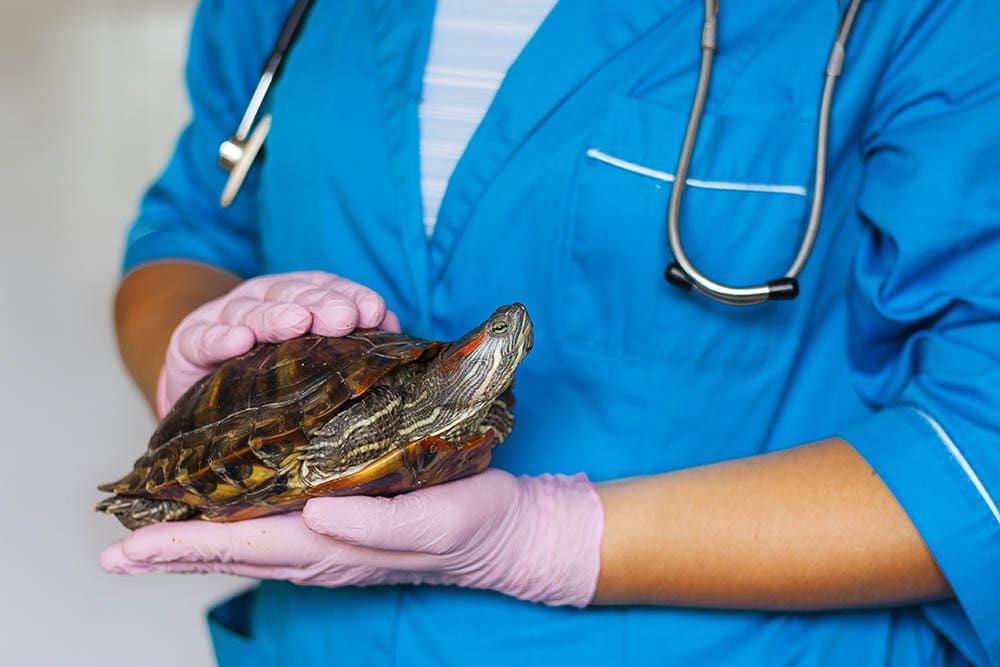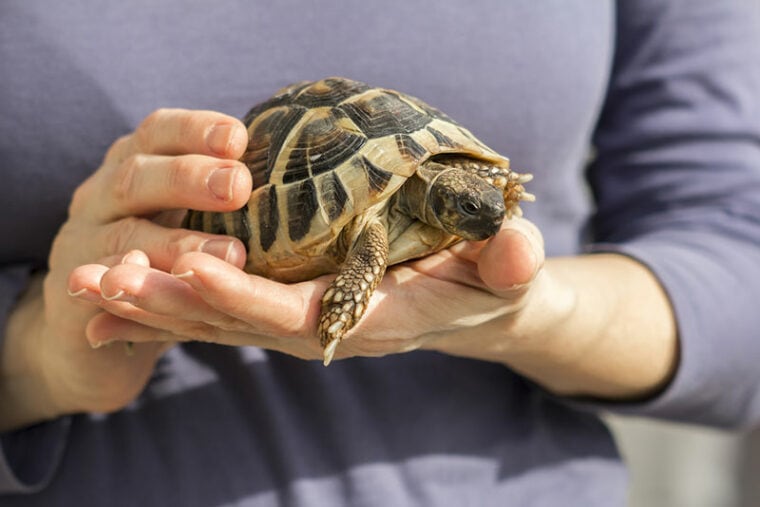
Click to Skip Ahead
A turtle is a placid reptile that is an easy target for predators. However, they quickly disappear into their shell when a threat appears. With such an important role and an incredible ability, you may wonder just how hard their shell is.
A turtle shell is extremely hard and can withstand thousands of pounds of pressure. A turtle’s average fracture toughness is 36.4 MPa m1/2. In this article, we’ll explore the amazing strength of a turtle’s shell, its composition, and how you can look after your pet turtle’s shell.
How Is a Turtle Shell Structured?
One of the more unusual evolutionary characteristics found in reptiles is the shell of the turtle. The shell evolved over millions of years and provides an incredible defense against predators. While a turtle’s shell may appear separate from its body, it is part of the turtle’s spine and is made of bone.
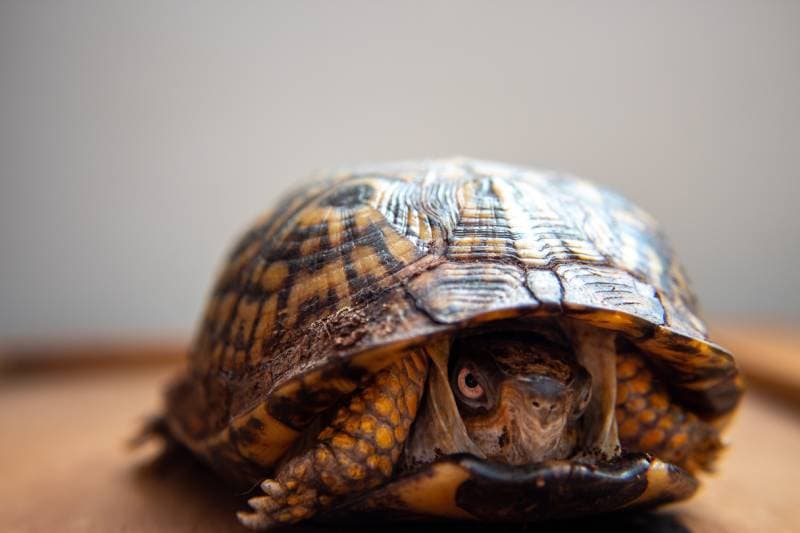
The Carapace and Plastron
The protective shell is a part of the turtle’s body just as our skeleton is to ours. The hard shell is made up of two parts: the top part, which is the carapace, and the bottom part, known as the plastron. These two parts are fused together on each side to form a bridge. The surface of the carapace is covered in the distinguishing hexagonal and pentagonal shapes known as shutes, which are packed tightly together and made from keratin—the same protein that makes up our hair and nails.
The Interior Bone Structure
The spine and ribs of the turtle, as well as the interior bone structures of the turtle, are fused together. While the turtle’s neck and tail vertebrae are small and flexible, the central vertebral column is lengthy and rigid and connected with the shell’s bony layer to support the carapace.
The Round Exterior
The shape of the shell protects the turtle from the claws and teeth of predators and makes it easy for them to flip back onto their feet if they get turned over. The hexagonal and pentagonal shapes are designed perfectly to fit together tightly and create a tension-free bend.
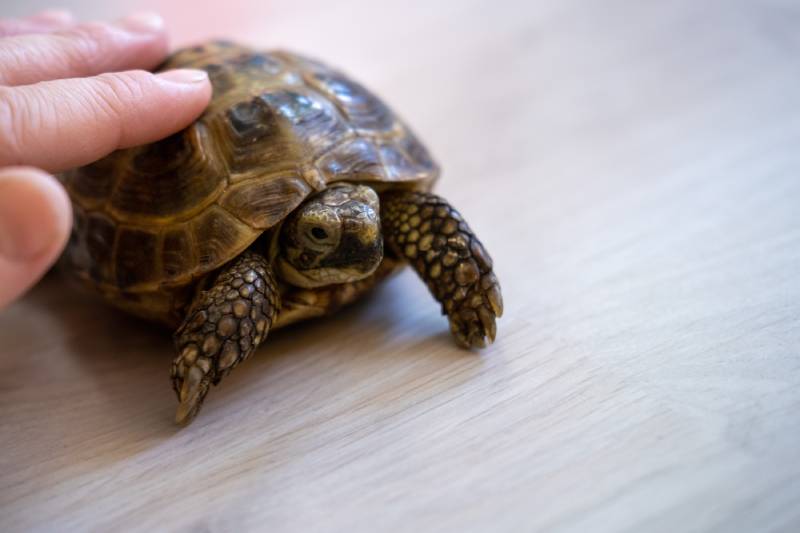
How Hard is a Turtle Shell?
As you can imagine, a turtle’s shell is tough. It is stronger than aluminum and can withstand thousands of pounds of pressure. The force needed to fracture a surface is known as its fracture toughness, and a turtle’s average fracture toughness is 36.4 MPa m1/2. To give you some perspective, aluminum’s fracture toughness is 22MPa m1/2.
The interior layers of the shell play a significant role in its durability. A more sponge-like substance that fills the gap beneath the outer layer gives the shell some flexibility by absorbing pressure if the shell is pushed down. The ridges at the borders of this inner layer’s sections, which are distinct from the scutes, allow them to interlock. Given that a curved shell is more prone to shatter under pressure, these joints provide the shell greater room to bend.
Evolution over millions of years has produced a variety of shapes that combine to form a tortoise’s curved shell. The turtle’s rounded shell has protected it from predators and harsh environmental conditions in various environments, demonstrating that stability may also be found in curves. These shapes offer a natural answer to the mathematical and physical challenge of designing a dome-like structure that is both strong and light.
How Much Weight Can a Turtle’s Shell Withstand?
A turtle’s shell can also withstand an incredible amount of weight. It is strong and durable enough to bear heavy loads and to be submerged under water. According to scientists, a box turtle’s hardest shell can withstand a force of up to 1,000 pounds or 40 times the bite force of a predator of similar size.
Turtles can dive deep into the water and surface without worrying that the pressure will crack their shells, and because of their strength, turtles can conceal themselves in tight spaces, making them incredibly difficult to catch. For a turtle in the wild that encounters dangerous predators or significant hurdles, their shell strength is very valuable.
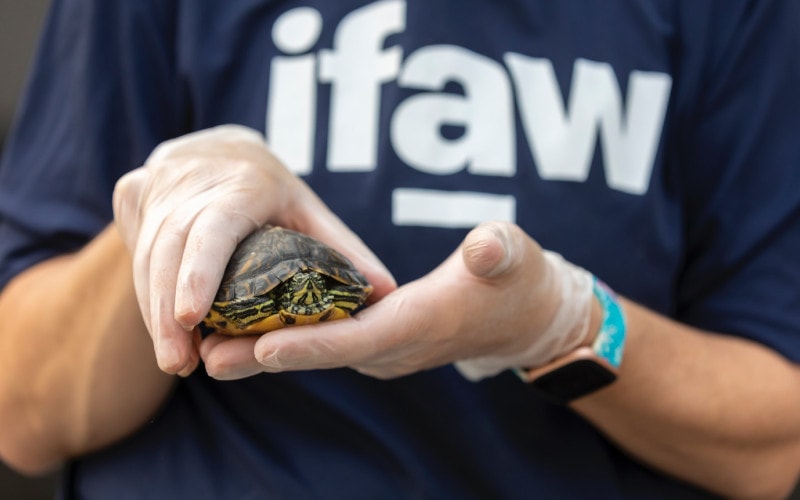
How Does a Turtle’s Shell Provide Protection
The backbone and ribs of the shell connect the top and bottom halves, creating a solid and robust protective layer. Collagen, a substance also present in human skin and bones, reinforces the shell’s inner layer, making it stronger and more difficult to penetrate. Additionally, the exterior layer includes a distinctive pattern of ridges and grooves that deflect and absorb any forces that might be transferred to the shell.
Furthermore, the turtle’s shell can serve as camouflage, allowing it to blend in with the surroundings and making it more difficult for predators to identify. It also helps the turtle stay hydrated and healthy and protects their internal organs.
What Happens if a Turtle Shell Gets Damaged?
The shell of a turtle is their only defense, so if it gets damaged, it can be potentially fatal for a turtle. A cracked or broken shell can leave a turtle vulnerable to predators, bacteria, and infection. Furthermore, because the turtle’s organs are housed in a thin membrane known as the coelom, they are also left vulnerable to damage.
When kept as pets, turtles are more likely to sustain injuries from being run over by cars, dropped on hard surfaces, attacked by dogs, and hit by lawnmowers, but in the wild, they may damage or lose part of their shell when attacked by predators. If the damage is severe, it can be fatal. A veterinarian may be able to perform surgical repairs on minor damage or partial cracks.
Caring for Your Pet Turtles Shell
Fortunately, maintaining a healthy turtle shell is simple, and quality care generally reduces the likelihood of shell issues.
FAQ
Here are some of the most common questions about turtles’ shells.
Can a Turtle’s Shell Heal and Grow Back if Damaged?
As we mentioned, a turtle’s shell is made of keratin, which is the same protein that makes up our hair and nails. The shell can repair itself and heal; however, depending on how big or deep the crack is, it can leave the turtle vulnerable to potential health issues while it is mending. If you own a pet turtle and they manage to crack their shell, it is important to find a vet immediately since they may need to disinfect and surgically repair your turtle’s shell.
Do Turtles Feel Pain Through Their Shells?
Surprisingly, turtles can feel it when you touch their shells. They can feel their shells being petted, tapped, and scratched because it contains nerve endings that make them sensitive enough to feel pain.
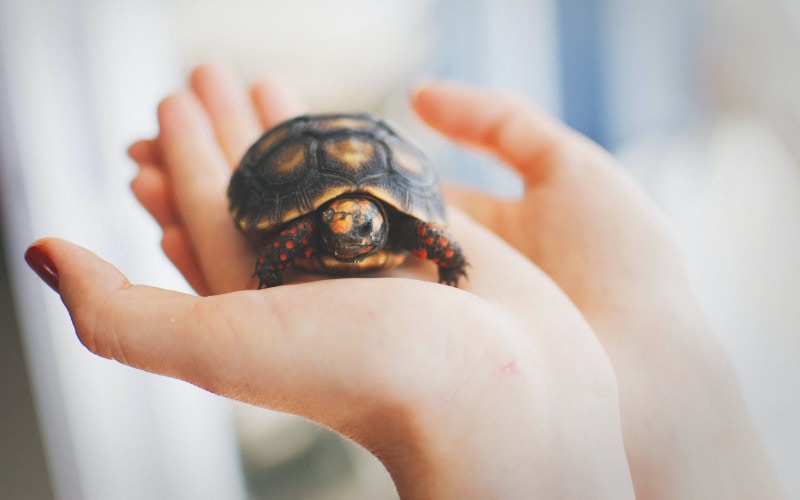
Conclusion
While a turtle’s shell may not be as resilient as Captain America’s shield, they are tough and withstand up to 200 times their weight. Unsurprisingly, their shells are their primary defense against predators in their natural habitat. These findings demonstrate how turtles are more resilient than we give them credit for and that their shells are more of a marvel than we may have thought
Featured Image Credit: Ivan Smuk, Shutterstock


